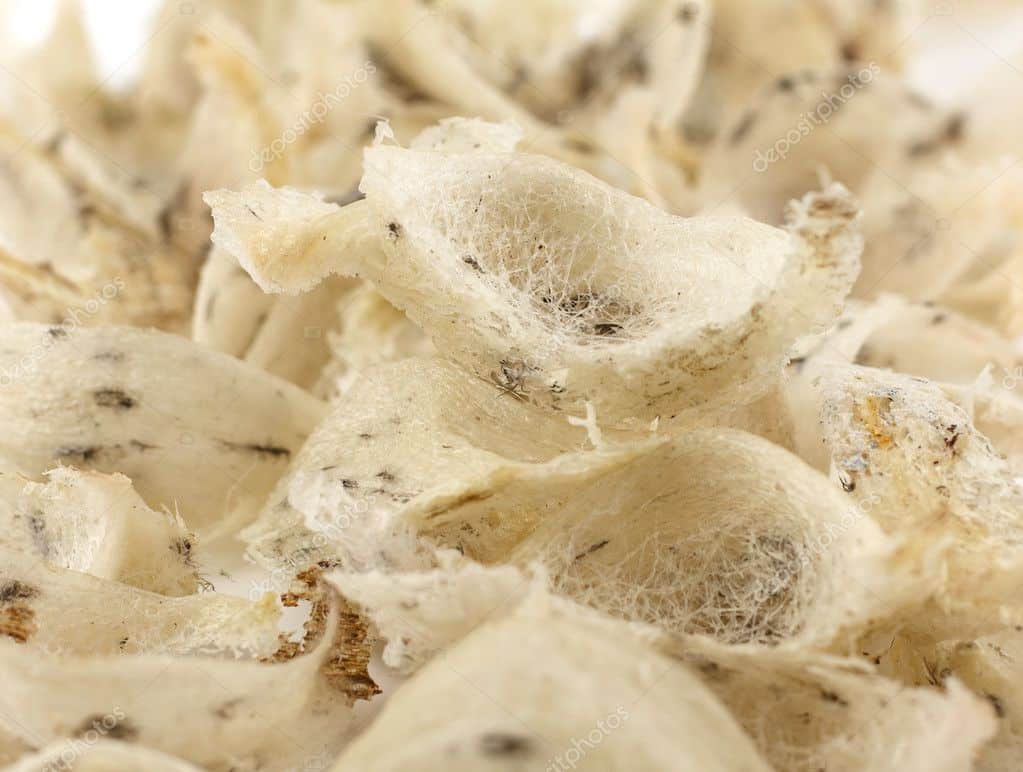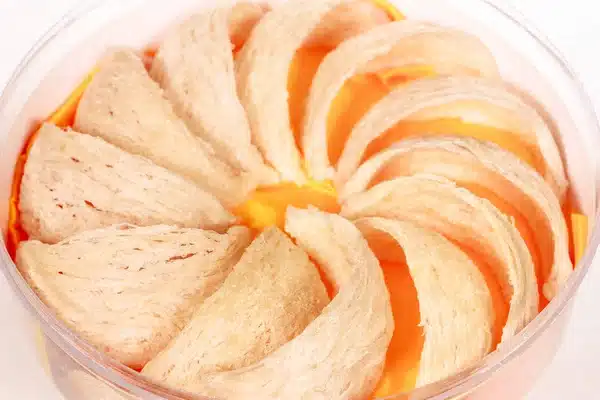Wondering what does bird nest soup taste like? But why would anyone eat that? Well, if you don’t know, Bird’s nest soup is a luxurious and prized delicacy in Chinese cuisine. These nests are constructed using the bird’s saliva of a small bird species and harvested from caves or cliffs. The soup is renowned for its delicate flavor and perceived health benefits, making it one of the most sought-after dishes in Chinese culinary tradition.
It is considered a symbol of wealth, prestige, and abundance. It is often served at banquets and special occasions to showcase the host’s generosity and status. Throughout history, bird’s nest soup has been a treasured delicacy for its health benefits, including promoting radiant skin and the immune system. As a result, it has become an integral part of traditional Chinese medicine, further elevating its cultural significance.
What Does Bird Nest Soup Taste Like?
Bird’s nest soup has a delicate and subtle taste. The exact flavor can vary depending on the quality of the bird’s nest used and the preparation method. Generally, the soup has a mild and slightly sweet taste with a smooth and gelatinous texture.
Types of Bird’s Nests Used In Bird Nest Soup

- Different types of bird’s nests are used for various purposes, including producing bird’s nest soup.
- The most prized and expensive nests are those constructed solely from the swiftlet’s bird nest soup saliva, referred to as “white nests” or “pure nests.”
- Nests that contain impurities like feathers or debris are of lower quality and are known as “red nests” or “black nests.” These are typically less expensive.
Rarity and Cost Of Bird Nest Soup
The rarity and labor-intensive process of harvesting bird’s nests contribute to their high cost, making bird’s nest soup one of the most expensive dishes in Chinese cuisine.
How much is bird nest soup? The price of bird’s nests can vary significantly depending on their type, purity, size, and overall quality.
The highest quality white bird’s nest can be extremely expensive, reaching several thousand dollars per kilogram. On the other hand, nests with impurities such as feathers or debris are of lower quality. These nests are relatively less expensive.
Why Is Bird Nest Soup So Expensive?
Bird’s nest soup is one of the most expensive delicacies in the world due to several factors:
-
Rarity and Limited Supply
Bird’s nests are rare as they come from specific regions in Southeast Asia, and swiftlets produce a limited number of nest each breeding season.
-
Labor-Intensive Harvesting
Collecting nests from cliffs or caves is dangerous and requires skilled collectors, making the process labor-intensive and time-consuming.
-
Time-Consuming Nest Construction
Swiftlets take several weeks or months to construct nests using their saliva meticulously.
-
Grading and Quality
Swiftlet saliva nests are the most expensive white nests, while lower-quality nests have impurities.
-
Cultural and Symbolic Value
Bird’s nest soup is highly esteemed in Chinese culture, associated with wealth, prestige, and health benefits.
-
Luxury Status
Its exclusivity, cultural significance, and perceived health benefits contribute to its status as a luxury delicacy.
-
Limited Supply
The combination of rarity, labor intensity, and cultural significance restricts the overall supply, increasing the price.
The Process Of Collecting Bird Saliva Nests

Collecting bird’s nests made of bird saliva is a delicate and intricate process that requires special techniques and skills. The nests are made by swiftlets, a type of bird that belongs to the Apodidae family. Swiftlets use their saliva to build their nests, and here is how to collect the nests
Finding Nesting Locations
Swiftlets build nests in dark and secluded places like caves and cliffs.
Harvesting Period
The collection is done during specific times to protect swiftlet populations.
Climbing and Collecting
Skilled harvesters climb to the nests using ropes or ladders.
Careful Nests Collection
Collectors have to remove Nests carefully without any damage.
Cleaning and Sorting
They clean and sort harvested nests based on quality.
Sanitization
Nests may undergo additional sanitization before use or sale that too without losing its taste and quality.
Birds Nest Soup Benefits
Bird’s nest soups have various potential benefits, particularly in traditional Chinese medicine. In contrast, some benefits that are based on traditional knowledge and anecdotal evidence. Scientific research on bird’s nest soup has proved specific health effects. Here are some of the common benefits of bird’s soup:
- Skin Health
- Immune System Support
- Respiratory Health
- Nutritional Nourishment
- Antioxidant Properties
- Growth and Development
Chinese Birds Nest Recipe
Preparing bird’s nest soup is a delicate and time-consuming process. Here’s a traditional Chinese bird’s nest soup recipe:
Ingredients
- 50g dried bird’s nests
- 1-liter chicken or vegetable broth
- 2 cups water
- 2 slices ginger
- 2 tablespoons rock sugar (adjust to taste)
- 1 teaspoon salt (adjust to taste)
- Optional: 1 egg white (lightly beaten)
Instructions
- Cleaning the Nests. Gently clean the dried bird’s nests, removing any impurities or feathers. Rinse them thoroughly under running water.
- Soaking the Nests. Place the cleaned bird’s nests in a bowl and cover them with 2 cups of water. Let them soak for at least 4 to 6 hours or until they have expanded and softened.
- Steaming the Nest. Once the nests soften, drain the soaking water and place the nests in a steamer. Steam them for about 20 minutes until they are fully tender.
- Preparing the Soup Base. Bring the chicken or vegetable broth to a simmer over medium heat in a separate pot. Add the slices of ginger and let it infuse the broth for a few minutes.
- Adding Nests to the Soup. Carefully transfer the steamed bird’s nests into the simmering broth. Allow them to cook together for about 15 minutes, allowing the flavors to meld.
- Sweetening the Soup. Add the rock sugar to the soup and stir until it dissolves. You can add sweetness according to your taste preferences.
- Seasoning. Add salt to the soup, adjusting it to your taste. The salt will balance the sweetness and enhance the overall flavor.
- Optional Addition. For a thicker and silkier texture, you can add lightly beaten egg white to the soup while stirring gently.
- Serving. Once the soup is ready, spoon it into serving bowls and garnish with a sprinkle of chopped scallions.
Our Final Words
In conclusion, bird’s nest soup is a rare delicacy in Chinese culture. The soup is made from the nests constructed by swiftlets using their saliva, requiring a delicate and time-consuming preparation process. Bird’s nest soup offers various benefits, such as supporting skin health, boosting the immune system, and aiding respiratory health. If you have curiosity What Does Bird Nest Soup Taste Like? We suggest, try one!





